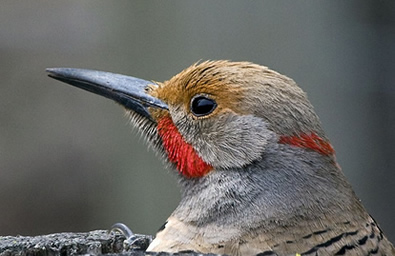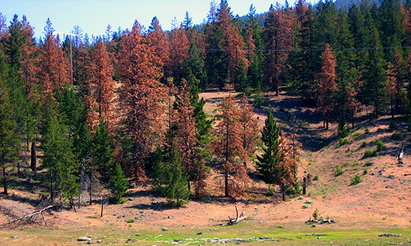

INTRODUCTION TO THE BIODIVERSITY OF BRITISH COLUMBIA

by
Brian Klinkenberg
Department of Geography, University of British Columbia
British Columbia is renowned for its biodiversity, for the plants and animals that inhabit the ecosytems of our mountains, lakes and rivers, and for the myriad species that are found in the adjacent Pacific Ocean. But what exactly is biodiversity? Where do we find it? Can we touch it, feel it, hear it?
Biodiversity, or biological diversity, includes the plants and animals, the plant communities and the ecosystems that make up our natural world. It is the diversity of species found in any region or area.
In this project, we bring together essays by many of British Columbia's biodiversity experts that explore and discuss the biodiversity of the province. Through these essays, we aim to provide an introduction to biological diversity, discuss what biodiversity is, how we can protect it, where we find it, and how scientists study it. Specifically we introduce BC's biodiversity hot spots, discuss conservation issues surrounding these, and provide an introduction to the province's rare and endangered species. We aim to bring to you write-ups on what researchers are studying, the ecological systems they are exploring, and the species dynamics they seek to understand.
As a special component, we also explore methods of studying biodiversity and look at how geospatial technologies, such as GIScience and remote sensing, enhance biodiversity investigations and understanding. We also explore the growing area of VGI--Volunteer Geographic Information--and the concept of citizen science.
This site is also a portal. Through it we provide direct access to the biogeographic atlases of British Columbia: E-Flora BC and E-Fauna BC. These atlases summarize and centralize information on BC's wild species, and include species descriptions, distribution information (including interactive biogeographic mapping, illustrations and deep links to other species-specific information sources).
If you wish to explore the diversity of plant and animal species found in British Columbia, and learn more about where they live, and how they live, start with the on-line biogeographic atlases for BC--E-Flora BC and E-Fauna BC. These atlases provide key summary information on BC species, including information on where species occur and what they look like. Visit the photo galleries to help identify the wild plants and animals that you see around you.

Mountain Pine Beetle has caused die-off of ponderosa pine in British Columbia,
influencing biodiversity in the province through species abundances, occurrences
and overall vegetation change.
How Many Species Are Found in British Columbia?
In E-Flora BC, atlas pages are provided for the thousands of wild plants, fungi and lichens of the province. These pages provide information on the taxa presently listed for BC by the BC Conservation Data Centre. The list of taxa includes species, subspecies and varieties.
In E-Fauna BC, atlas pages are provided for the more than 200 faunal or wildlife groups present in the province. These range from sea stars to hoofed mammals, and include such diverse creatures as corals, sponges, sea stars, ribbon worms, molluscs, earthworms, spiders, ticks, mites, water fleas, copepods, isopods, mayflies, dragonflies,butterflies, moths, bumblebees, birds, fish, amphibians and mammals. Atlas pages are provided for many of the groups and more are being added daily. For example, we now cover all species of butterflies found in the province, and are in the process of adding pages for moths.
To view a list of the groups of wildlife covered by E-Fauna BC, go to the home page and cursor over the drop down menus at the top of the page.
Click on a group name to call up the associated list of species and atlas pages, and to view the total number of taxa presently recognized in BC for that group.
Please cite these pages as:
Author, Date. Page title. In Klinkenberg, Brian. (Editor) 2020. Biodiversity of British Columbia [www.biodiversity.bc.ca]. Lab for Advanced Spatial Analysis, Department of Geography, University of British Columbia, Vancouver.
All material found on this web site is covered by Canadian Copyright Laws. Please contact the respective copyright holder if you wish to use any illustration, photograph or text.